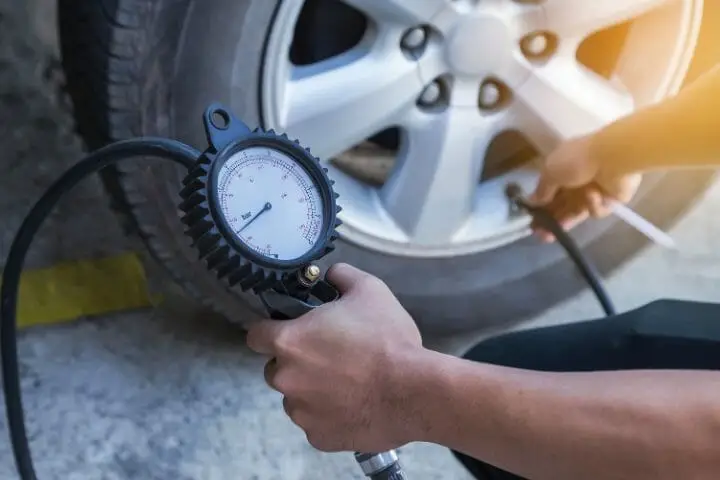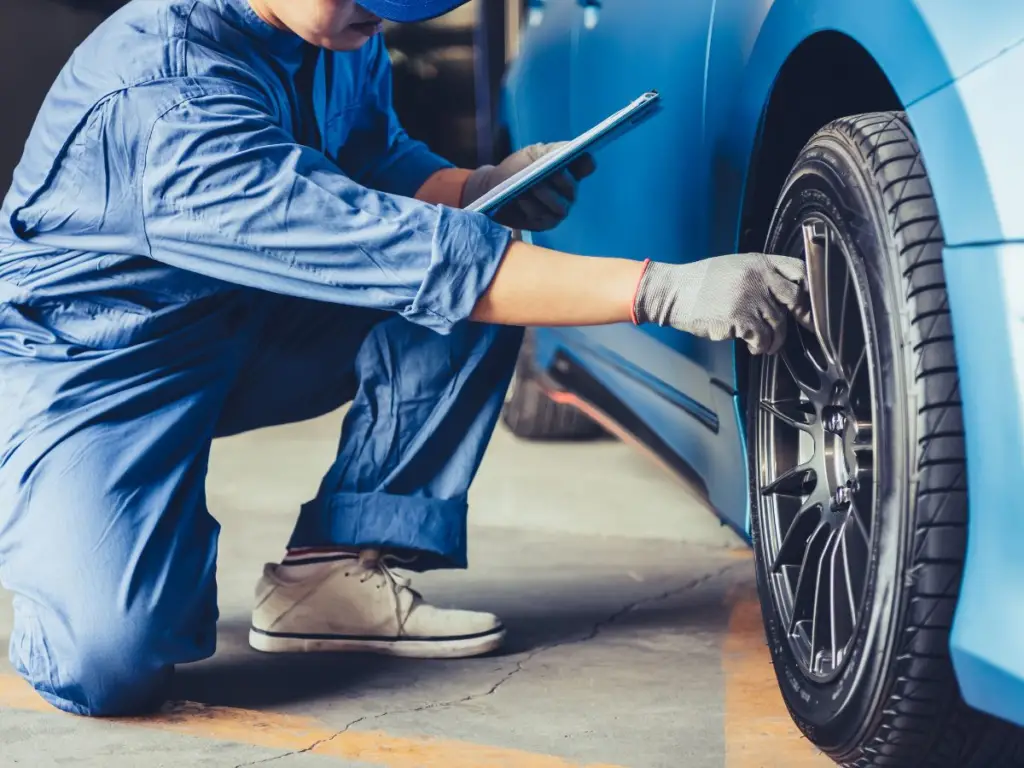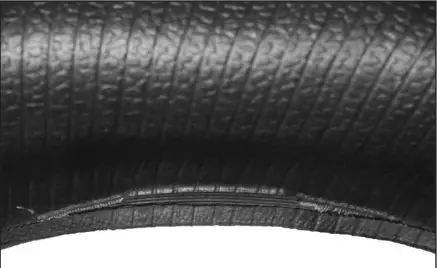No, spare tires do not have any pressure sensors. Generally, the traditional spare tire does not contain any pressure sensor. Because traditional spare tires are only intended to be used for a short period of time. But if you buy a full set of spare tires, then you will get a pressure sensor in the spare tires.
Read the full article to learn more about “Do spare tires have pressure sensors?” and their importance in spare tires.
Key Takeaways
- Pressure Sensors in Spare Tires: Traditional spares lack sensors; some full-sized ones (e.g., Toyota, Mercedes-Benz) have sensors for extended use.
- TPMS Requirement and Significance: No legal demand for sensors in spares. But TPMS provides safety, control, fuel efficiency.
- Tips for TPMS Care: Regular inspections, address warnings, monitor battery, detect malfunctions, rotate tires, store properly.
Are Pressure Sensors Installed in Spare Tires?
The spare tire, traditionally referred to as ‘Donuts’ is not equipped with a TPMS (Tire Pressure Monitoring System) sensor. They are intended to be used temporarily until you reach a garage to replace your flat tire. So, the TPMS light on the dashboard may come on when driving with a spare tire.
TPMS monitors the air pressure inside the pneumatic tires on vehicles and reports real-time tire pressure information to the driver. However, the spare tire is often overlooked and does not have a sensor to provide pressure information.
It’s important to note that TPMS sensors are usually installed in the regular tires of a vehicle, allowing for monitoring and alerts for under-inflation. But some full-sized spare tires have pressure sensors like Toyota, Mercedes-Benz, BMW, Honda, etc.
Those spare tires are produced for long use. That’s why for safe journeys pressure sensors include those spare tires.

You should always keep a set of spare tiers in your car for safety purposes. If you want to go for a long time you should also mount your spare tires on the rooftop of your vehicle.
Is It A Necessity for Spare Tires to Include TPMS?
There is no legal requirement for spare tires to have Tire Pressure Monitoring System (TPMS) sensors. This is because not all vehicles are equipped with TPMS in the first place.
Since the spare tire is meant for emergencies and might not even be used, there’s no law demanding a TPMS sensor for it. Adding unnecessary sensors would just be an extra cost without practical benefits.
How to Know If Your Spare Tire Has TPMS
There are three ways to find out if your spare tire has TPMS, so you can use it whenever you need it.
- First of all, your car’s owner’s manual contains valuable information about your TPMS. Find out if your spare tire has a sensor in a section about tires or TPMS. TPMS direct or indirect can also be explained in the manual to help you understand how they work.
- Take a look at your spare tire to see if it has TPMS. Your spare tire’s valve stem (where air is pumped in) needs to be checked. Sensors for TPMS are usually attached to valve stems. It may have a metal cap or a special cap. It’s likely that your spare tire has TPMS if it looks like this.
- You can always ask a professional mechanic whether your spare tire has TPMS. They can tell you if your spare tire has a sensor. Additionally, they can advise you on how to maintain your TPMS and spare tire.
Should I Have TPMS in Spare Tires
Although spare tires do not necessarily have a TPMS sensor, there are several reasons you can have it. Because at times it can lead to more inconvenience and problems.
Safety Issues:
In spite of the spare tire’s temporary and emergency use, keeping it properly inflated is essential for safety. Having a TPMS sensor in the spare tire helps by providing pressure alerts, just like it does for regular tires.
Incorrect inflation levels, either too low or too high, can result in negative outcomes such as compromised handling, increased tire wear, and in severe cases, tire blowouts – the very situations the spare tire is meant to address.
Convenience:
Another reason for having a TPMS sensor in the spare tire is convenience. Regular spare tires without TPMS sensors won’t immediately activate the warning light, but they can cause confusion later on.
If you’ve resolved the flat tire problem but haven’t properly reset the spare tire, you might encounter an unexpected TPMS warning. Being aware of whether the spare has a TPMS sensor helps in efficiently addressing such issues.
Improves Control:
Tire Pressure Monitoring Systems (TPMS) are valuable for enhancing car performance by consistently checking tire pressure.
This aids in preventing issues like punctures and tire bursts. Additionally, TPMS contributes to better fuel efficiency by ensuring tires are consistently inflated to the correct levels.
Decreases Deflation:
TPMS plays a crucial role in tire maintenance by minimizing the risk of flat tires. It achieves this by consistently monitoring tire pressure to ensure proper inflation.
This practice not only prolongs tire lifespan but also enhances fuel efficiency. Adequately inflated tires are more resistant to sudden failures, thus reducing the potential for accidents.
Enhances Fuel-efficiency:
Tire Pressure Monitoring Systems (TPMS) contribute to fuel efficiency and vehicle handling. Maintaining proper tire inflation can save money on gas and enhance vehicle control. TPMS monitors tire pressure, alerting you to low pressure levels, preventing flat tires and related issues.
Adequate tire inflation not only conserves fuel but also improves vehicle handling. A functional TPMS is essential for maintaining proper tire pressure, ensuring cost savings and optimal vehicle performance. Any TPMS issues should be promptly examined by a qualified mechanic.

Ways to Take Care of Your Spare Tire’s TPMS
Maintaining and caring for your spare tire with a TPMS sensor is crucial. TPMS sensors in spare tires benefit from regular maintenance in my years as a mechanic and writer.
Carry Out Regular Inspections:
Begin by regularly inspecting your spare tire’s TPMS. Similar to your primary tires, it’s important to periodically assess the spare tire’s inflation.
Keep in mind that TPMS doesn’t substitute routine pressure checks. Consult your vehicle’s owner’s manual for the suggested inflation levels.
Don’t Ignore TPMS Light:
If you’ve used your spare tire and the TPMS light is on, take it seriously. This light indicates low tire pressure that requires addressing.
While you can add air using an air pump, it’s wise to have a professional inspect the tire for potential punctures or damage to ensure proper resolution.
Watch Out for The Battery:
Remember, TPMS sensors run on batteries, typically lasting 5-10 years before requiring replacement. If your spare tire has a TPMS sensor and it’s been in use for a while, consider having the sensor inspected and replaced if needed.
Identifying TPMS Malfunction:
Full-size spare tires may not come with TPMS sensors. Check your spare tire’s owner’s manual and inspect it for TPMS sensors.
The warning light should illuminate if your spare tire loses air. Lights that remain on may indicate a malfunction.
Rotating Tires Properly:
Performing regular tire rotations is essential for maintaining tire performance. It’s important to rotate spare tires as well, despite their current non-use.
This practice ensures even tire wear, leading to a longer tire lifespan. Refer to your vehicle’s manual for guidance on rotation patterns.
Storage:
Store your spare tire correctly to preserve its pressure and shield it from extreme temperatures. This upkeep safeguards your TPMS and prevents damage.
It’s crucial to routinely inspect the pressure, particularly when seasons change.

PRECAUTION: Severe harm or even fatality could arise from tire malfunction caused by damage to the tire bead. A tire with a damaged bead has the potential to burst while being mounted or experience failure during subsequent usage.

Frequently Asked Questions (FAQs):
Why TPMS Light Still On After Spare Tire Installed?
When your spare tire lacks a TPMS sensor, your vehicle’s TPMS warning light might stay lit after installing the spare. While not alarming, it indicates the need to promptly repair or replace the original tire.
What’s The Recommended Time to Check Spare Tire Pressure?
Similar to your main tires, it’s important to check the spare tire’s pressure at least one time a month. Also, before extended journeys, whether or not it includes a TPMS sensor
How Long Can A Spare Tire Last?
Spare tires generally last up to a decade, but their condition should be monitored more often if stored externally or under the vehicle. Exposure to harsh weather and road salt can lead to corrosion of security bolts, potentially hindering removal. To ensure accessibility, it’s advisable to remove the spare tire annually.
Conclusion
In conclusion, not all spare tires have TPMS sensors. However, their inclusion can significantly contribute to safe driving and the longevity of the tires. I hope this article will help you to maintain your spare tires too.
